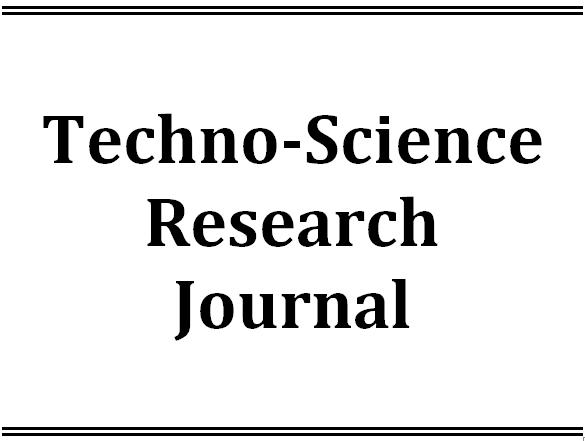Latest Issue
Empowering Education with Online Khmer Handwritten Text Recognition for Teaching and Learning Assistance
Published: August 30,2025Undergraduate Student Dropout Prediction with Class Balancing Techniques
Published: August 30,2025Status of Seawater Quality at Koh Rong Island, Sihanoukville, Cambodia
Published: August 30,2025Low-Complexity Detection of Primary Synchronization Signal for 5G New Radio Terrestrial Cellular System
Published: August 30,2025Word Spotting on Khmer Printed Documents
Published: August 30,2025Tuning Hyperparameters Learning Rate and Gamma in Gym Environment Inverted Pendulum
Published: August 30,2025Examining Passenger Loyalty in Phnom Penh Public Bus System: A Structural Equation Modelling Approach
Published: August 30,2025Prediction on Load model for future load profile of Electric Vehicle charging demand in Phnom Penh
Published: August 30,2025Economic Study on Integrating PV-DG with Grid-Tie: Case Study in Cambodia
Published: August 30,2025Emission Sources of Air Pollutants in Phnom Penh, Cambodia
-
1. Department of Chemical Engineering and Food Technology, Institute of Technology of Cambodia, Russian Ferderation Blvd.,
P.O. Box 86, Phnom Penh, Cambodia
Academic Editor:
Received: January 20,2024 / Revised: / Accepted: January 20,2024 / Available online: June 01,2013
Cambodia is an under developing country and economic development is certainly leading to increase the level of air pollution. In order to keep an economic growth with acceptable environmental loads, the investigations of primary sources are essentially important. This paper discusses a study on Tota Suspended Particulate (TSP), Organic Carbone (OC), Elemental Carbone (EC), Char-EC and Soot-EC concentration at the major emission sources, traffic (intensive sampling), construction, brick factory, cooking (Ouressey market), breakfast shop and stove, and also the investigation on daily life of citizens, breakfast shop and generator used at the hotel in Phnom Penh. OC, EC, Char-EC, and Soot-EC were analyzed using the IMPROVE thermal/optical reflectance method with different temperature plateaus and oxidation atmospheres. Referring to our result, 55% of gas using for cooking and 68% of people going to work by motorbike. Breakfast shop generally used 12kg of charcoal per day. The consumption of diesel for generator in hotel, was around 30L/h, when electricity cut of. TSP concentration at traffic side was between 72.55 and 1091.06 μg/m3 with the average 580.08 μg/m3 and the linear correlation between TSP and traffic amount is R2 = 0.77. The average value of OC and EC was 41.25 μg/m3 and 21.59 μg/m3 respectively. Amount 5 others sources, stove showed the highest concentration of TSP, OC and EC, 2789.82 μg/m3, 1454.87 μg/m3 and 796.45 μg/m3,while TSP in, breakfast shop, cooking, brick factory, construction were 1210.38 μg/m3, 454.20 μg/m3, 380.07 μg/m3, 266.47 μg/m3, respectively. These pollutants will give many adverse effects on public health and climate change.

